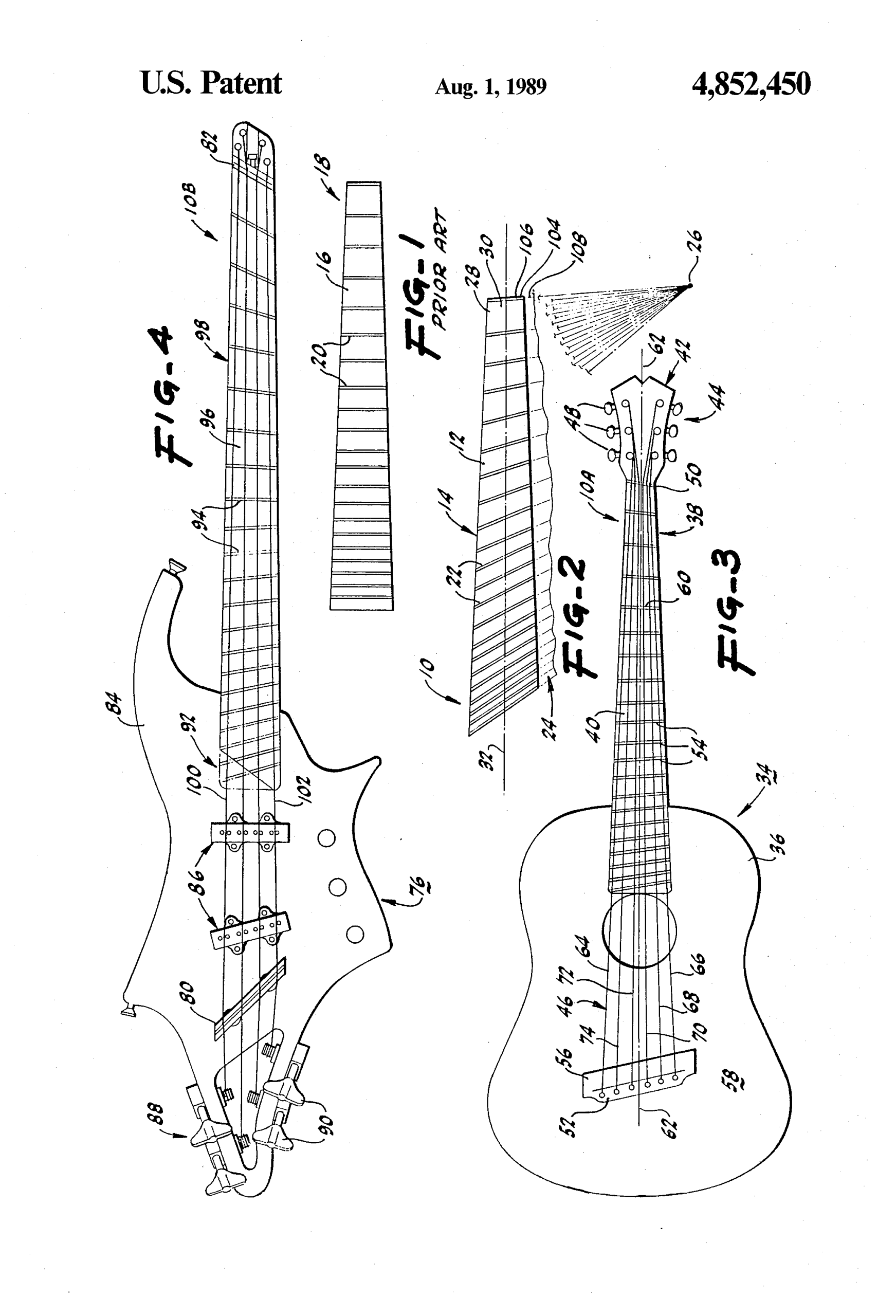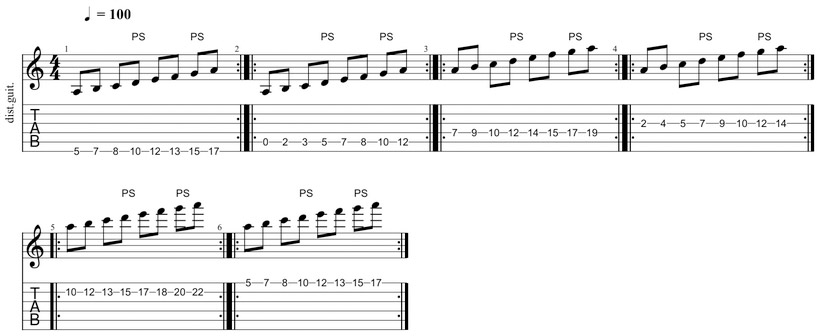After trading my trusty Telecaster for an Ormsby fanned fret guitar, I was surprised how easy the fanned fret guitar transition really was. Many guitarists hesitate to try fanned frets, fearing a steep learning curve or an awkward playing experience. But with some patience and the right approach, adapting to this multi-scale design can be a smooth and rewarding process. In this guide, I’ll share my firsthand experience, practical tips, and insights from other guitarists who’ve made the switch, helping you confidently embrace the unique benefits of fanned fret guitars.
Understanding Fanned Frets and Multi-Scale Guitars
Fanned frets, also known as multi-scale frets, differ from traditional fretboards by featuring angled frets that create varying scale lengths across the strings. Instead of all frets being perpendicular to the neck, the frets fan out, allowing the bass strings to have a longer scale length than the treble strings. This design improves string tension and intonation, offering enhanced tone and playability.

The multi-scale design provides several benefits. Longer scale lengths on the lower strings improve clarity and tightness, especially useful for seven-string guitars or extended-range instruments. Meanwhile, shorter scales on the higher strings make bending and fast playing easier, maintaining comfort for lead work. This blend offers a balanced playing experience that traditional guitars can’t match.
Despite these advantages, some common misconceptions persist. Many assume fanned frets are difficult to play or feel unnatural. However, real guitarist experiences reveal that the transition is surprisingly manageable. One player noted,
“I was surprised to find the fanned frets made for very little challenge to acclimate to.”
This reflects a broader consensus that fanned frets begin to feel natural after a short adjustment period. For those interested in a more comprehensive breakdown of how fanned frets work and their practical implications, understanding fanned fret guitars: the ultimate guide offers an in-depth resource.
- Start with familiar tuning and string gauges to reduce initial complexity.
- Focus on hand positioning adjustments gradually rather than forcing immediate perfection.
- Use exercises that emphasize scale length differences to build muscle memory.
Video tutorial: How to slot a multi-scale (fanned fret) fretboard
Debunking the Fear: Why Fanned Frets Aren’t as Weird as You Think
Psychological barriers often prevent guitarists from exploring new gear like fanned fret guitars. Fear of awkward hand positioning or a steep learning curve can be discouraging. However, many players who transitioned smoothly highlight that prior experience with extended-range guitars, such as seven-string models, significantly eases this process.

“Having played seven-string guitars before made the transition to fanned frets much less daunting than I expected.”
Initial hesitation is common but usually unfounded. Trying out a fanned fret guitar in person can quickly dispel worries, as the feel often aligns closely with traditional guitars once you adapt. Watching demo videos and reading reviews from players with similar backgrounds also builds confidence. For those wanting to dive deeper, community discussions like Fan-fret fans? reviews appreciated – The Gear Page offer valuable firsthand insights and nuanced perspectives from a broad range of players.
- Try out a fanned fret guitar before buying if possible to get a hands-on feel.
- Watch demo videos and read reviews from players with similar experience levels.
- Give yourself time to adapt without pressure; gradual progress is key.
Educational video: Understanding Fanned Fret and Multi-Scale Guitars
Practical Advice and Exercises for Mastering Fanned Frets
Mastering fanned frets involves developing muscle memory and adjusting your picking and fretting coordination to the angled fretboard. Warm-up exercises tailored for multi-scale fingerboards help build this foundation.

Start by practicing ascending and descending scales slowly to familiarize yourself with the fret angles and scale length shifts. Using a metronome can improve timing and accuracy as you adjust your hand positioning. Additionally, experimenting with pick thickness and grip enhances control and comfort, which some players find crucial for adapting to the new feel.
Community members often recommend gradual practice focusing on scales and chords rather than rushing to complex techniques. Comfortable picks and minor gear tweaks also contribute to a smoother transition. For those looking for personal insights and real-world experiences on adapting to fanned frets, First time learning guitar, fanned frets? : r/LearnGuitar – Reddit offers a helpful discussion full of practical tips from fellow guitarists.
- Practice scales ascending and descending slowly to build muscle memory.
- Use a metronome to develop timing and accuracy while adjusting hand positioning.
- Experiment with pick thickness and grip for better control and comfort.
Video tutorial: How to slot a multi-scale (fanned fret) fretboard
Choosing the Right Fanned Fret Guitar and Accessories
Selecting the right fanned fret guitar involves considering several factors, including scale lengths, neck profile, and string gauges. Beginners should start with medium gauge strings to balance tension and playability, adjusting based on personal feel as they gain experience.

Accessories like picks significantly impact playability and tone on fanned fret guitars. A discussion among players highlights the importance of choosing picks that feel comfortable over chasing tonal hype. One guitarist put it succinctly:
“Forget about picks for sound… Use the picks that feel the most comfortable, and that’s it.”
Before purchasing, consulting with luthiers or experienced players can provide valuable insights tailored to your playing style. For those looking to deepen their understanding before making a decision, Understanding Fanned Fret Guitars: The Ultimate Guide offers an in-depth exploration of the unique features and benefits of these instruments. Investing in a comfortable pick and proper setup ensures you get the most out of your new instrument.
- Consult with luthiers or experienced players before purchase to find the best fit.
- Start with medium gauge strings and adjust based on feel and playability.
- Invest in a comfortable pick that suits your playing style rather than chasing tone myths.
Video tutorial: How to slot a multi-scale (fanned fret) fretboard
Common Misconceptions and Contrarian Views from the Community
While many embrace fanned fret guitars, some skepticism remains regarding marketing claims and the true value of these instruments. A few players question whether the tone differences are as pronounced as advertised and caution against overspending on premium accessories without personal testing.
Understanding that tone and feel are subjective helps balance hype with realistic expectations. For those looking to deepen their knowledge, the differences between multiscale and fanned fret designs are explored in detail, offering valuable insight to help you make informed decisions.
The best approach is focusing on what feels right for your playing rather than following trends blindly.
- Focus on what feels right for your playing, not on trends or marketing hype.
- Test gear personally rather than relying solely on reviews or opinions.
- Be open to experimentation but avoid unnecessary expenses on unproven accessories.
Conclusion
Transitioning to fanned frets is easier than many expect, especially if you have prior extended-range guitar experience. Community insights validate the practical benefits and dispel myths surrounding fanned fret guitars. With the right mindset, gradual practice, and informed gear choices, you can confidently embrace fanned frets for enhanced tone and playability.
Ready to apply these techniques? If you’ve been curious about fanned frets, try one out and share your experience with fellow guitarists.
What challenges or surprises did you encounter when switching to a fanned fret guitar? Let’s discuss!